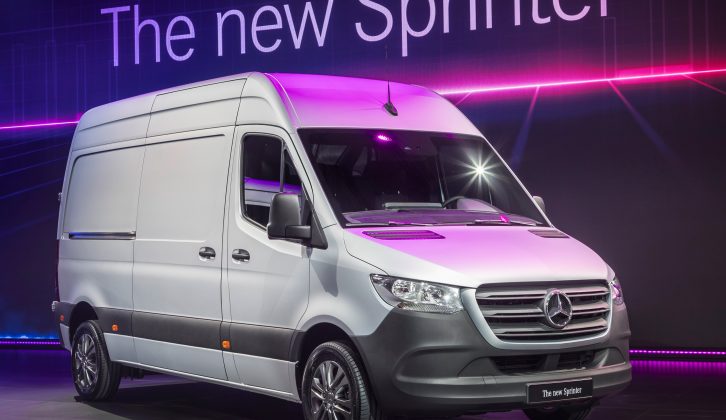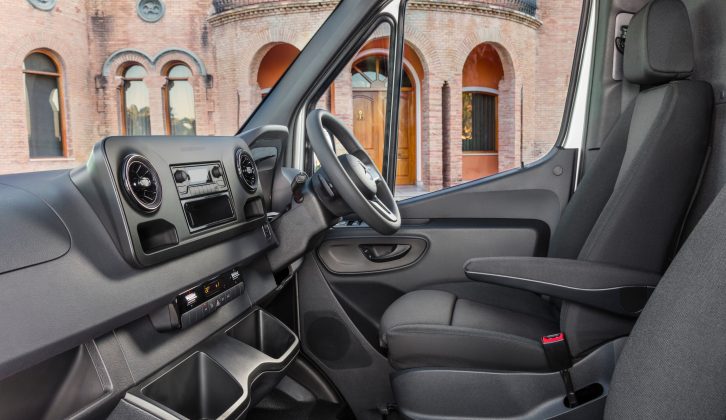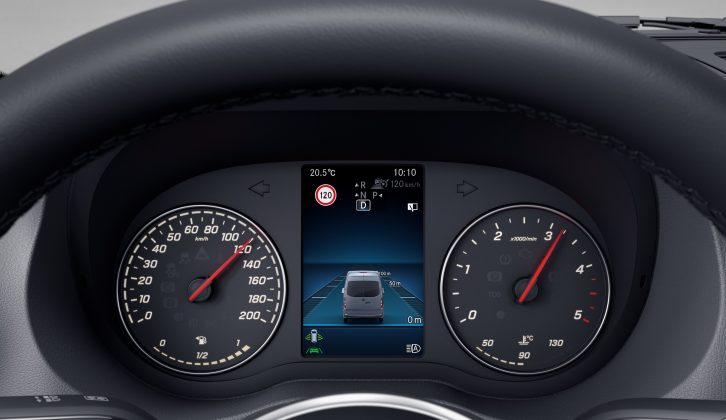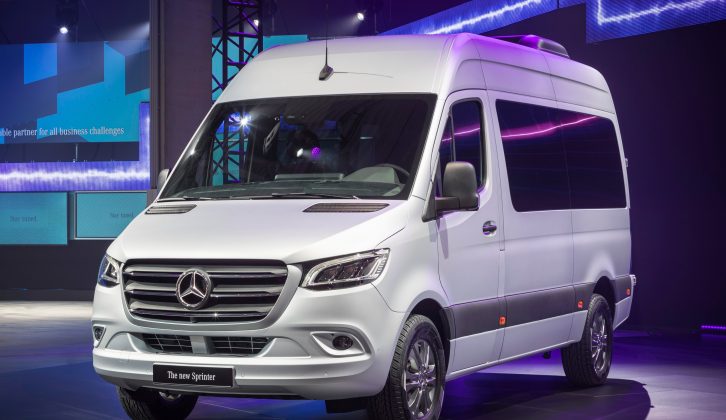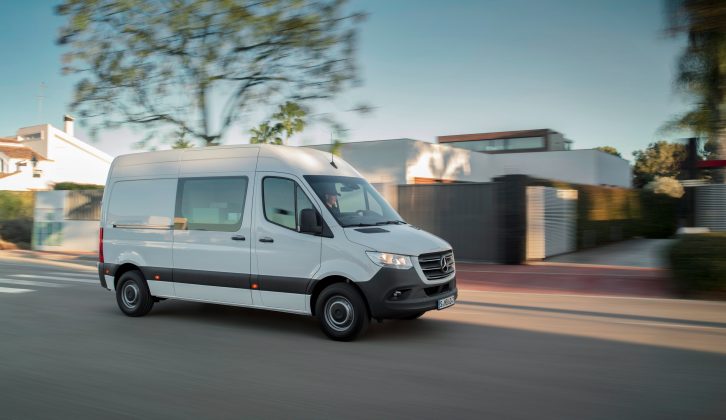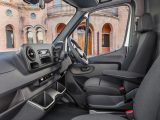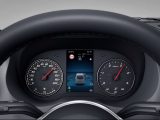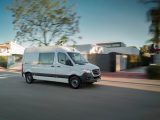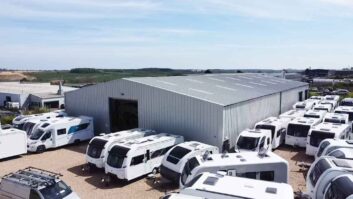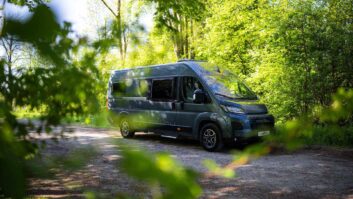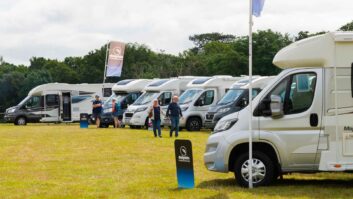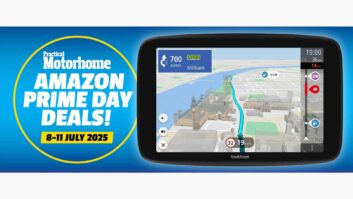Mercedes-Benz has revealed the third iteration of its Sprinter, a large van that has a small but significant following among motorhome converters.
Sprinter brings the benefits of this iconic German passenger car brand to the LCV (light commercial vehicle) market, namely comfort, safety and impeccable mechanicals.
The Sprinter was launched in 1995 and is used as a motorhome base vehicle across Europe, with British converters including Auto-Sleepers, Devon Conversions, Lunar and RS Motorhomes.
What’s new?
The third version of the Mercedes-Benz Sprinter was previewed in Stuttgart early in January, and Practical Motorhome was there.
We had a chance to inspect a chassis cab variant of the new vehicle, sit in some mock-ups of the new cabs, and see films of the new features and on-board technology.
The new Sprinter has moved on aesthetically from the previous one, with subtle tweaks to the exterior styling and a facelift in the cockpit.
But it’s under the floor where Mercedes-Benz is really ringing the changes on its new LCV.
Front-wheel drive Sprinters
First up, front-wheel drive (FWD) is now available, bringing the Sprinter into harmony with motorhome-underpinning LCVs from the likes of SEVEL (the manufacturing partnership that produces the Citroën Relay, Fiat Ducato and Peugeot Boxer), Ford, Renault/Nissan and Volkswagen.
Rear-wheel drive and all-wheel drive will continue to be offered, though, giving Sprinter some extra appeal to specialist converters.
The move to FWD is significant, though, as it increases the payload by 50kg and lowers the floor by 8cm, creating more room for internal fittings and reducing the need for a step up into the vehicle.
Engine options
Three diesel engines will be offered, but one – the 172bhp/295lb ft OM 651 variant – is exclusively available for motorhomes.
Mercedes-Benz says high cruising speeds with quiet running and ride quality, and optimised fuel consumption, can be achieved with the standard six-speed manual gearbox or the optional nine-speed 9G Tronic torque converter automatic. Both transmission systems are new, with the latter being a first in the large van segment.
Having a torque converter automatic gives the new Sprinter another unique selling point, as it will be a different proposition from other automatic transmissions available on motorhomes, for example Fiat’s ComfortMatic robotised manual gearbox.
Panel van converters can choose between three different wheelbases, three body heights and five weight classes on the new Sprinter, plus chassis cabs and chassis cowls will also be offered for converting coachbuilt and A-class motorhomes.
A digital revolution?
Moving inside the vehicle, Mercedes-Benz has released a selection of comfort, safety and connectivity features for the new Sprinter, which it claims will herald the digital age for motorhomes.
A Sprinter-based motorhome will become a “smart home”, and therefore a real “smart camper”, the company says.
A digital communication module, available in the Sprinter for the first time, connects the motorhome with the internet, while Live Traffic provides the latest traffic information.
A new interface module, coming soon, will enable the status of various vehicle systems to be controlled via the auxiliary display in the camper van, or by smartphone.
Other useful bits of kit include optionally available LED headlamps and a Wet Wiper system with rain sensors – the latter improves visibility and efficiency when wiping the windscreen.
Built to go touring
A dedicated Camper App will allow access to the vehicle from anywhere in the world, to check the levels of gas and waste water, for example, or to allow the heating to be switched on remotely ahead of returning to the vehicle.
Driver aids and safety systems available on the new Sprinter include Distronic adaptive cruise control, Brake Assist, Active Lane Keeping Assist and Attention Assist. Crosswind Assist will also be available.
Other equipment includes a motorhome-specific air suspension system promising outstanding ride quality on long journeys, and low body roll while cornering, and all-season tyres have been developed to cope with long periods when the ’van will be left standing.
There’s also pre-installation for windscreen heaters, reinforced seat bases with a three-point seat belt, and pre-installations for Blind Spot Assist and Distronic.
Another feature designed for motorhome use is Hibernation Mode, which reduces the vehicle’s energy consumption to a minimum and effectively puts it into hibernation.
When Hibernation Mode is switched off, Mercedes says the Sprinter can be started without difficulty even after an extended break. This feature is available for all variants.
What will it cost?
So what kind of motorcaravanner will insist on having a new Sprinter as a base vehicle?
Mercedes-Benz cites interest from “best-agers”, those able to spend between €80,000-€160,000 (£71,000-£142,000) on the ’van of their dreams, who are not prepared to forego the kind of refinements one enjoys in the premium car sector.
Towards the top of that price range, a Mercedes-based Hymer ’van would be super-desirable, an all-German product that would bring out the best in these two iconic brands.
The new Sprinter can be ordered now and will be available from June.
And Mercedes-Benz has also revealed that a new eSprinter will be released in 2019, part of the company’s strategy to electrify its commercial van fleet. Interesting times.
A motorhome-specific air suspension system promises outstanding ride quality
